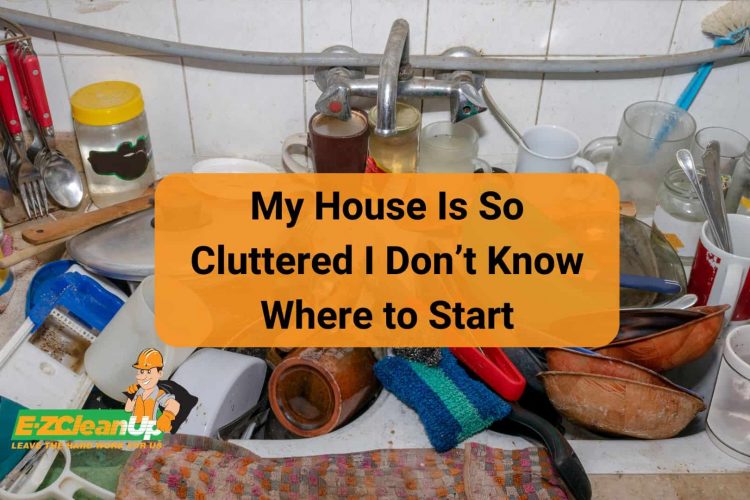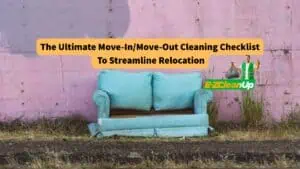To transform a cluttered house into a clean space, initiate by setting out achievable, room-specific goals and employing a decluttering checklist for guidance. Break the process into scheduled sessions to maintain motivation and employ sustainable practices like donating and recycling.
Do you also often find yourself thinking – “My house is so cluttered I don’t know where to start?” In this case, this guide can help clear your mind and space.
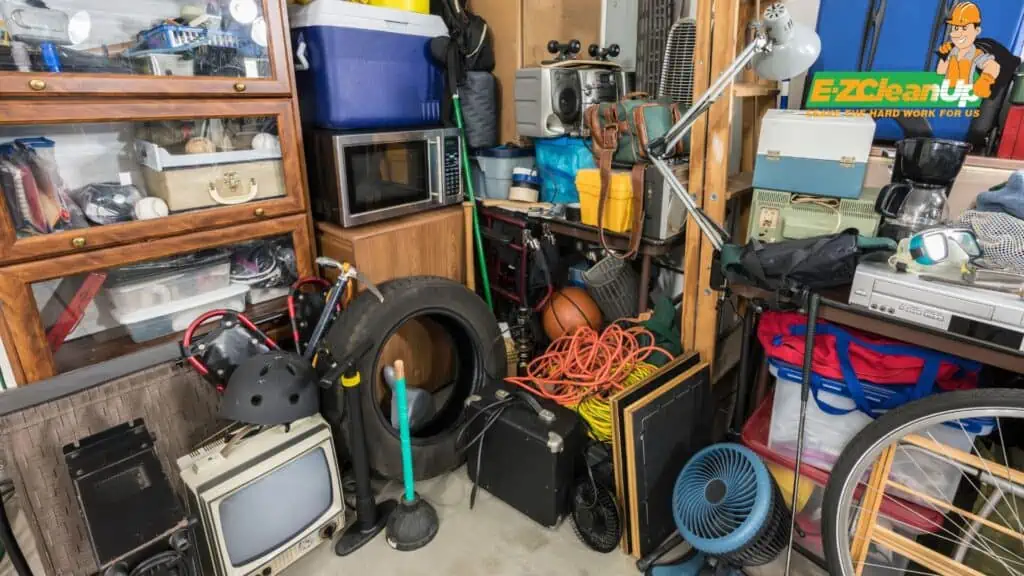
Preparing to Declutter
Recognizing when it’s time to declutter can vary greatly among individuals. It often starts with a feeling of being overwhelmed by your possessions or a desire to simplify your life. If you find that clutter is hindering your ability to enjoy your living spaces or causing unnecessary stress, it may be time to consider decluttering.
The process doesn’t have to be rushed and can be done gradually. Let’s break down how you can tackle this project by preparing to declutter effectively.
Setting Realistic Decluttering Goals
Begin by setting clear, achievable goals for your decluttering project. Consider what you want to accomplish in each room or area of your home. Setting specific goals helps keep you focused and motivated throughout the process.
For instance, your goal could be as simple as “declutter the kitchen countertops” or as broad as “reduce the items in my wardrobe by half.” Remember, the goal here is to create a more organized space that serves your needs better.
Creating a Decluttering Checklist
A decluttering checklist can serve as a roadmap for your project. List each area or room you plan to tackle and specify the tasks that need to be completed in each one. This might include sorting through clothes, organizing paperwork, or clearing out kitchen cabinets.
Your checklist will guide you through the process. It will ensure that no area is overlooked. It’s also satisfying to check off completed tasks, as it provides a visual representation of your progress.
Scheduling Decluttering Sessions
Decluttering an entire house can’t usually be done in a day. Break down the project into manageable sessions. Schedule specific times to work on each area. This approach helps prevent burnout and ensures that the task doesn’t become overwhelming.
Consider factors like your daily routine, energy levels, and commitments when planning these sessions. For example, you might schedule a couple of hours on a weekend to sort through your living room or 15 minutes each evening to declutter a drawer or shelf.
Room-by-Room Decluttering Guide
Creating a decluttered and organized home involves tackling each area step by step. This guide will help you streamline the process. It will ensure every room becomes a space of cleanliness and efficiency. Here’s how to approach it:
1. Start with High-Traffic Areas
High-traffic areas greatly influence your home’s overall feel. Focusing here first makes your home more inviting and easier to keep organized.
Identify the most-used spaces in your home. This could be the living room, kitchen, or entryway. Commit to clearing any clutter here before moving on to less frequented areas.
2. Declutter the Living Room
As a central hub for relaxation and socializing, a tidy living room enhances the enjoyment of these activities.
- Start Small: Tackle shelves, coffee tables, and entertainment centers.
- Sort Items into Categories: Keep, donate, sell, or discard.
- Store Items: Once decluttered, find a designated place for what remains to simplify upkeep.
3. Organize the Kitchen
A clutter-free kitchen promotes culinary creativity and makes meal prep more enjoyable.
- Clear countertops by removing rarely used appliances and utensils.
- Go through cabinets and drawers, discarding anything that’s broken or never used.
- Use organizers for utensils and spices for easy access.
4. Simplify the Bedrooms
Bedrooms should be peaceful sanctuaries that promote restful sleep.
- Sort through clothing and personal items. Remove what you no longer love or need.
- Adopt a minimalist mindset for surfaces like nightstands and dressers to reduce visual clutter.
- Consider under-bed storage for seasonal items to keep them out of sight but organized.
5. Clear out the Bathroom
An uncluttered bathroom streamlines routines and reduces stress.
- Dispose of expired or unused products.
- Establish areas for daily essentials to keep countertops clear.
- Use drawer dividers and cabinet organizers to maximize space.
6. Manage Clutter in Storage Areas
Prevent storage spaces from becoming dumping grounds for forgotten items.
- Periodically review contents, removing items that no longer serve a purpose.
- Use clear bins and labels to keep items visible and accessible.
Overcoming Common Decluttering Obstacles
Tackling clutter, especially when it involves letting go of items with sentimental value, presents unique challenges. Here’s a comprehensive guide to help you overcome these common decluttering obstacles.
Dealing with Sentimental Items
Sentimental items are often the hardest to declutter due to their emotional ties. To ease the process, consider taking photographs of these items instead of keeping the physical objects.
This way, you preserve the memory without the clutter. For family heirlooms or historical items, donating them to museums or genealogical societies can offer a sense of purpose and relief, knowing they’re appreciated and cared for.
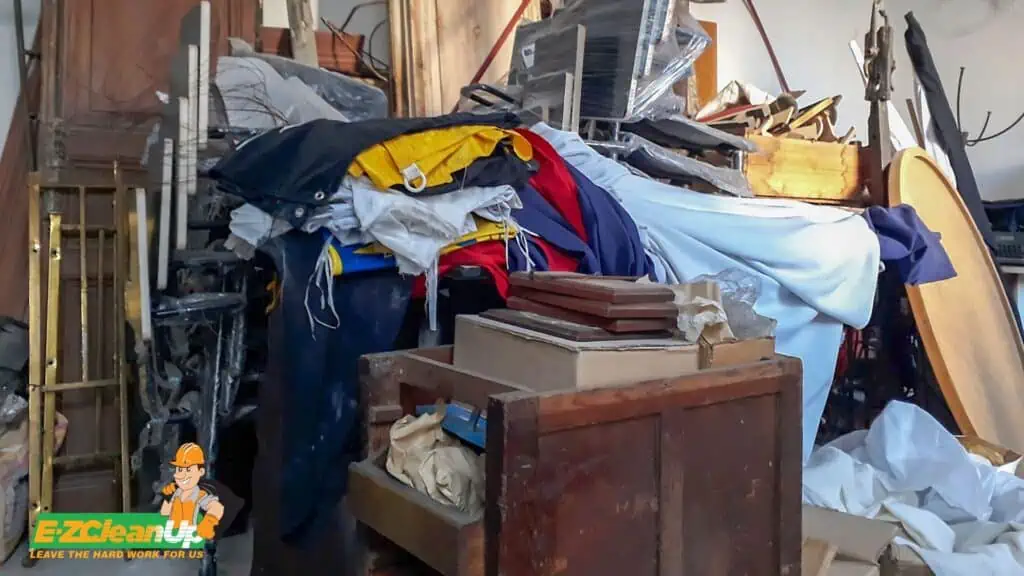
Overcoming the Fear of Letting Go
The fear of regret can be a significant barrier. To combat this, ask yourself a few key questions:
- Will a picture of the item suffice to preserve its memory?
- Could someone else find joy or use in this item?
If an item doesn’t have a practical use in your daily life or if it’s been stored away and forgotten, it might be time to let it go. Making firm decisions and starting with items that are easier to part with can build your confidence in decluttering.
Finding Motivation to Start and Keep Going
Motivation can disappear, especially when faced with large volumes of clutter or sentimental items. Remember, decluttering is not just about removing items. It’s also about letting go of the emotions and beliefs that hold you back.
Break down the project into manageable tasks, and don’t rush the process. Celebrate small victories and allow yourself to feel the emotions that come up. This journey is not only about creating space in your home but also about enhancing your overall well-being.
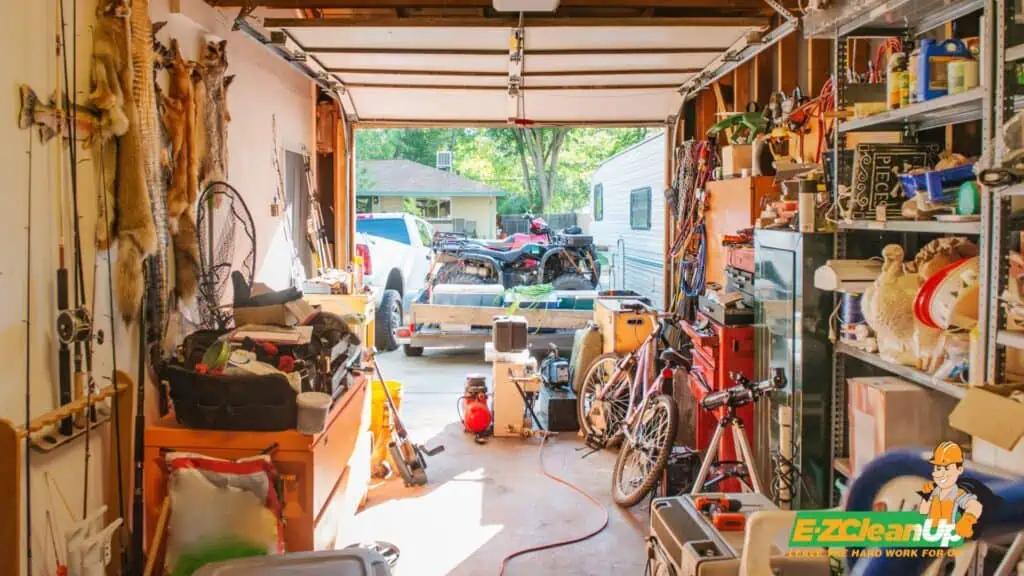
Sustainable Decluttering Practices
Tackling clutter in a sustainable way involves not just clearing out unwanted items, but doing so with an awareness of the broader impact. Here’s how you can approach decluttering your home with sustainability in mind:
Donating Items to Charity
Donating your gently used items is a great way to give them a second life while supporting charitable causes. However, to ensure your donations do the most good, it’s important to donate items that are truly useful.
Charities can only make use of items that are new, nearly new, or in good condition without holes or stains. If the items wouldn’t be of use to you in their current condition, they likely won’t be useful to someone else.
Additionally, consider selling items and donating the proceeds to charity. This approach can be more beneficial as it allows charities greater flexibility in how they use the donations.
Recycling and Disposing of Waste Responsibly
For items that aren’t suitable for donation, recycling is the next best option. Look for local recycling programs that accept the materials you’re trying to dispose of. Remember, some materials, like electronics, require special handling due to the harmful chemicals they contain.
Always research the most responsible disposal method for each type of waste. Organizations like Habitat for Humanity ReStore accept a wide range of items, including furniture, appliances, and building materials. They help divert hundreds of tons from landfills each year.
Selling Items You No Longer Need
Selling items can not only declutter your home but also bring in some extra income. Platforms like Facebook Marketplace, eBay, or Craigslist make it easy to reach potential buyers. Consider a garage sale a community event.
Whatever sales method you choose, ensure items are clean, functional, and presented in the best possible light to attract buyers. The proceeds from these sales can be saved, used for home improvements, or donated to a charity of your choice.
Adopting Decluttering Habits
By integrating simple, daily habits into your routine, adopting effective storage solutions, and committing to regular decluttering sessions, you can enjoy a more organized and peaceful living environment. Here’s how to make it happen:
- Everything Needs a Home: Designate a specific place for all your belongings to ensure they’re always returned to their spot after use.
- Clean High-Impact Areas Daily: Regularly vacuum and tidy areas that are prone to clutter. This includes putting away items like shoes and toys every day.
- Reset Your Home Each Evening: Spend a few minutes each night to reset your living spaces. Ensure everything used during the day is put away. This practice helps start each morning fresh and clutter-free.
- Utilize Clever Storage Ideas: In areas prone to clutter, such as bathrooms and kitchens, introduce storage solutions that keep countertops clear. For example, use drawer organizers for toiletries and spices to maintain neatness.
- Make Decluttering Convenient: Have a dedicated box or basket for items you plan to sell, donate, or throw away. Keeping this container in an accessible place makes it easier to declutter on the go.
- Schedule Weekly Resets: In addition to daily tidying, set aside time each week for a more thorough decluttering session. This could involve sorting through paperwork, cleaning out the fridge, or organizing a particular area of your home.
- Involve Your Household: Share the responsibility of maintaining a clutter-free home with all family members. Assigning specific tasks or areas to each person can make the process more manageable and less time-consuming.
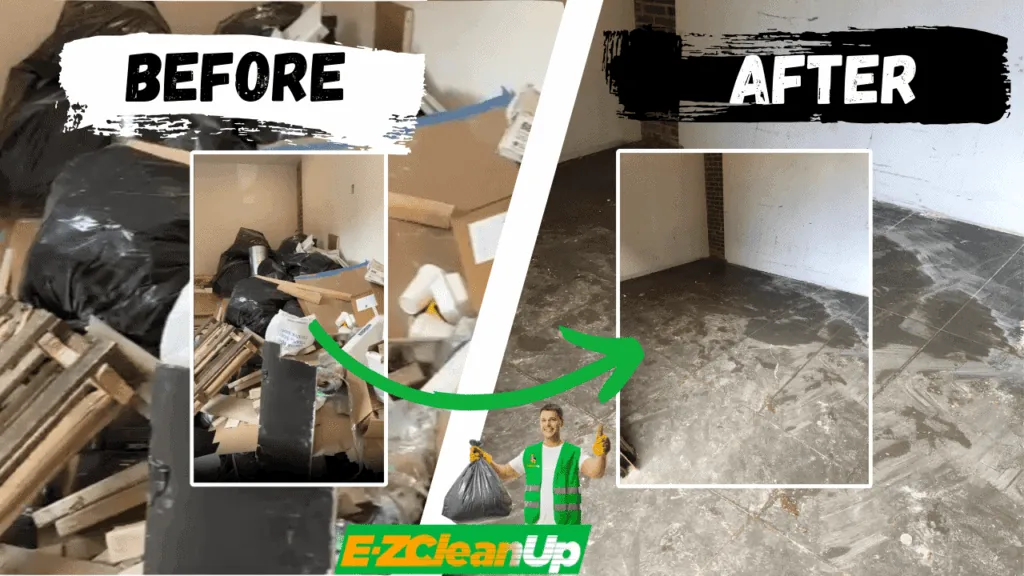
From Chaos to Calm
A cluttered house complicates the simple act of starting the decluttering process, but EZ CleanUp provides the necessary assistance to overcome this problem. Our services are designed to manage the disposal of your unwanted items efficiently.
Reach out to us, and together, let’s kickstart your decluttering project efficiently and quickly.

